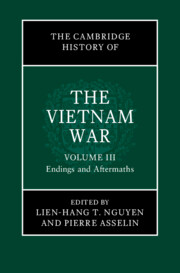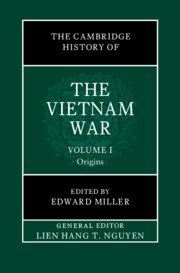3 results in The Cambridge History of the Vietnam War

The Cambridge History of the Vietnam War
-
- Published online:
- 02 January 2025
- Print publication:
- 28 November 2024

The Cambridge History of the Vietnam War
-
- Published online:
- 02 January 2025
- Print publication:
- 28 November 2024

The Cambridge History of the Vietnam War
-
- Published online:
- 02 January 2025
- Print publication:
- 28 November 2024

